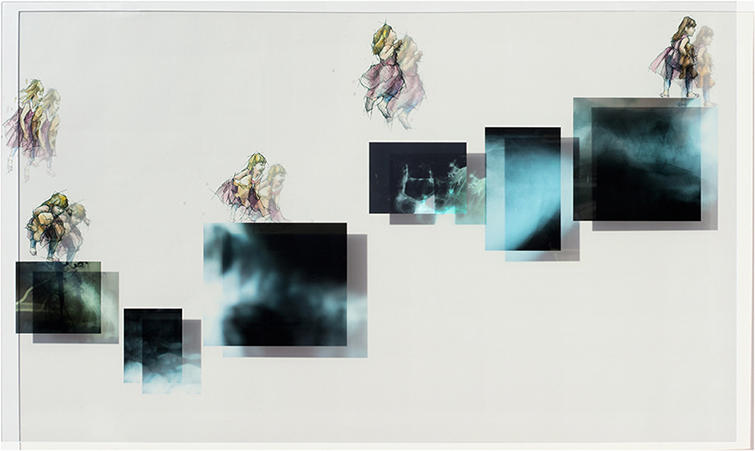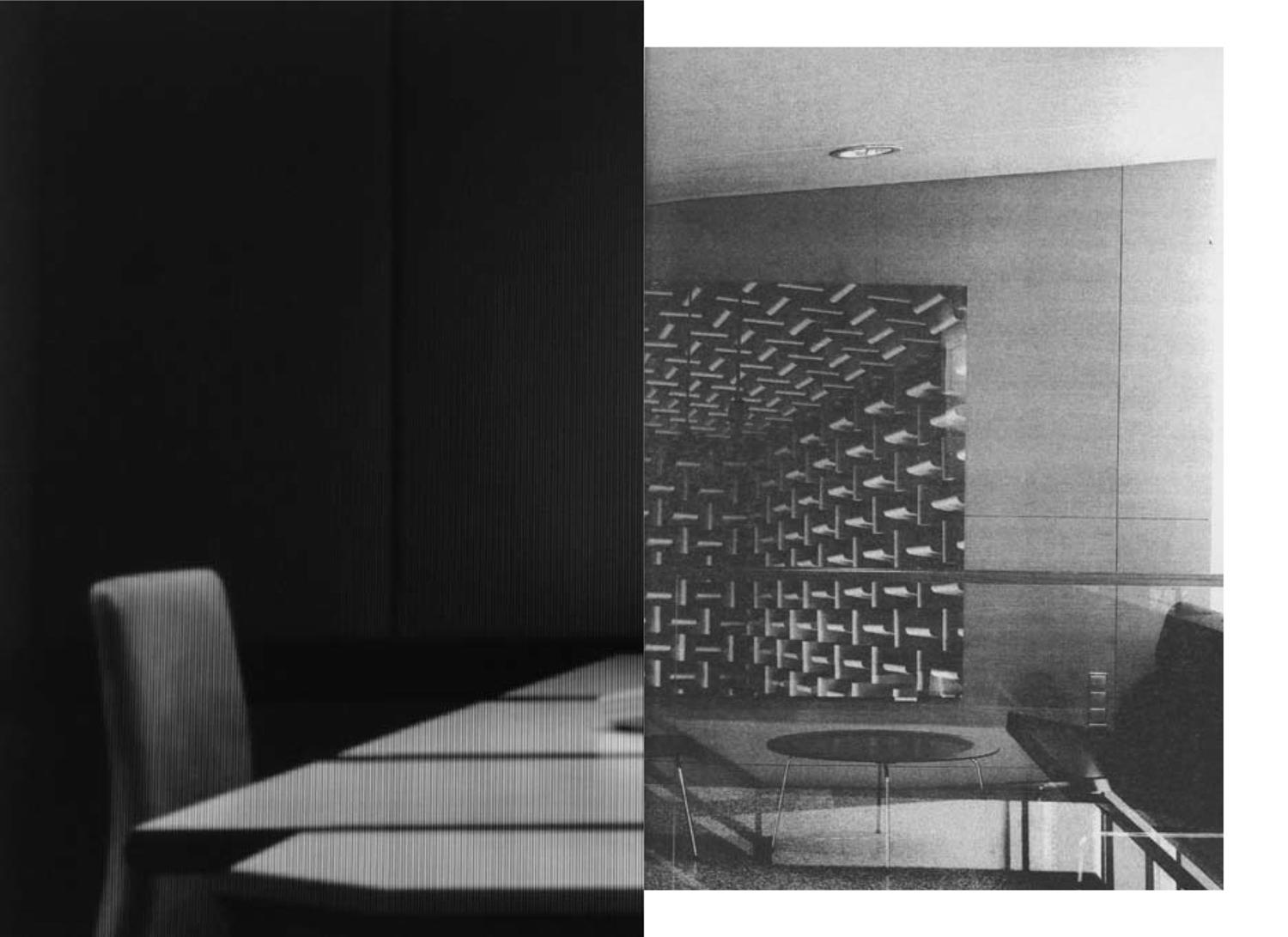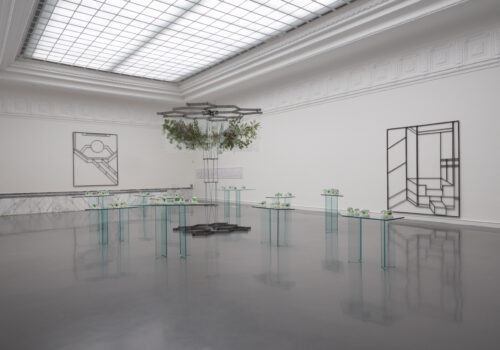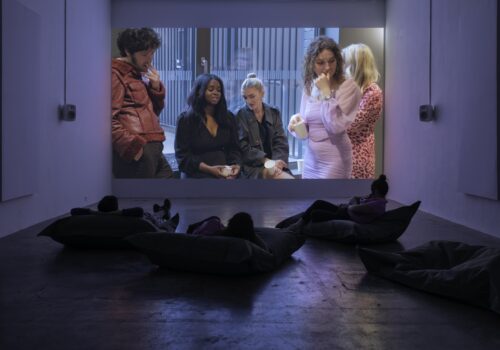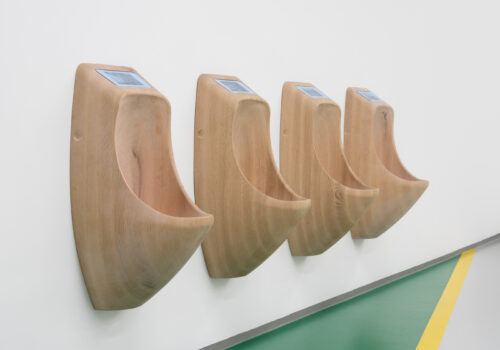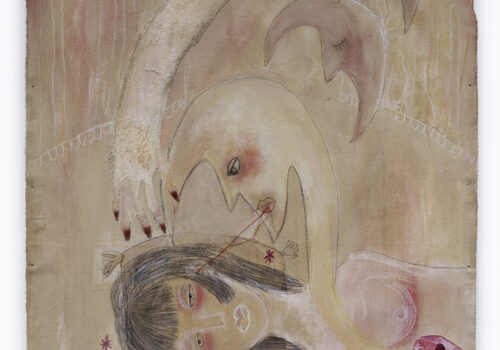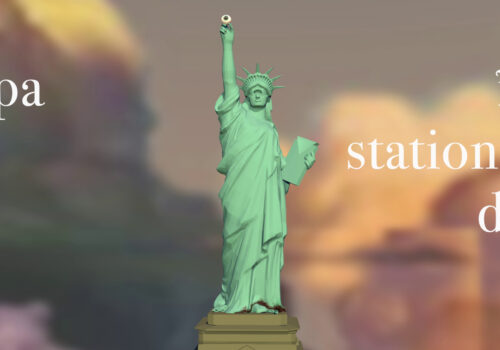Past Residents
Naomi Campbell
Naomi Andrée Campbell’s interdisciplinary practice explores natural systems of the body, its environment and how this is subjectively translated through our senses, employing a wide variety of techniques and materials ranging from X-rays to ice to paint. Campbell’s malleable worlds inspire and connect in, as much as create gaps through, a layered look at memory, perception, identity and permanence as constructs that guide her practice and philosophy. Campbell subverts expectation, forcing questions to arise rather than providing answers. A background in art and science prompted the adoption of this open-ended approach intrinsic to her work. Continually questioning the world through the changing lens of global conditions has resulted in a range of work discussing long-standing investigations into areas of environmental science.
Naomi Andrée Campbell (born in Montreal, Canada) lives and works in Brooklyn. Campbell’s work is found in permanent public collections including the MTA Arts for Transit, New York and The New York Public Library. She has contributed to American Artist, Artscape and Linea Art Journal and her work has been included in numerous publications including Art Students League of New York on Painting. Campbell has exhibited at Denise Bibro Fine Arts, New York; Asian Contemporary Art Fair, New York; Museum of Fine Arts, Croatia and represented by Yellow Peril Gallery at SCOPE Miami and New York. She is a visiting critic at Vytlacil Residency Program and has been a guest speaker at Lehman College and Pratt Institute, and an instructor at the Art Students League of New York since 2007.
Ground Floor Residents
Maya Jeffereis
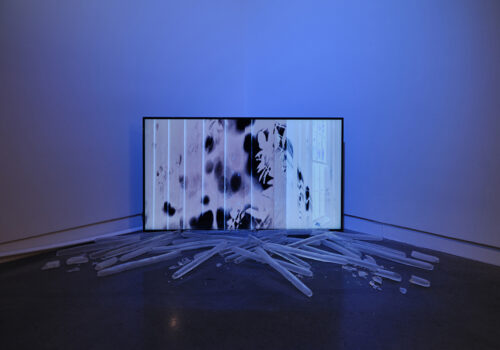
Horace W. Goldsmith Foundation, Alice and Lawrence Weiner, New York State Council on the Arts with the support of the Office of the Governor and the New York State Legislature, New York City Council District 34, New York City Department of Cultural Affairs, in partnership with the City Council, Brooklyn Borough President Antonio Reynoso, Hartfield Foundation, Danna and Ed Ruscha, The Milton and Sally Avery Arts Foundation
Keli Safia Maksud
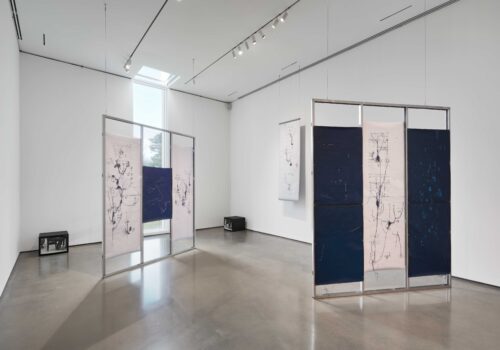
Horace W. Goldsmith Foundation, Alice and Lawrence Weiner, New York City Council District 34, New York City Department of Cultural Affairs, in partnership with the City Council, New York State Council on the Arts with the support of the Office of the Governor and the New York State Legislature, Brooklyn Borough President Antonio Reynoso, Hartfield Foundation, Danna and Ed Ruscha, The Milton and Sally Avery Arts Foundation
Hong Seon Jang
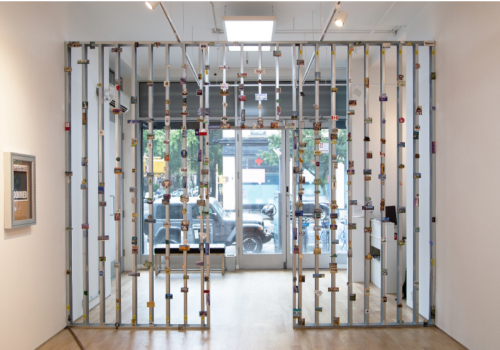
Horace W. Goldsmith Foundation, Alice and Lawrence Weiner, New York City Department of Cultural Affairs, in partnership with the City Council, New York State Council on the Arts with the support of the Office of the Governor and the New York State Legislature, New York City Council District 34, Brooklyn Borough President Antonio Reynoso, Hartfield Foundation, Danna and Ed Ruscha, The Milton and Sally Avery Arts Foundation
Past Resident2016: Senate Department for Culture and Europe, Berlin
Aleksander Komarov
Much of Aleksander Komarov’s film work are edited as essays concerning the economic, political, and social conditions that have enabled his nomadic lifestyle- a hallmark of globalized artist-hood. Through film Komarov explores the recording and production of imagery as a political activity, were images therefore appear as co-producers of social conditions. In each work, the spectator is situated within a timeline, on the premise of deconstructing a conclusive documentary statement and instead offering up multiple possible routes towards meaning. As a person entangled in multiple political systems, he exposes the contemporary identity politics as a regulation mechanism of post-industrial exploitation and question whether the art itself now takes over the old assignment of rationalization and standardization.
Aleksander Komarov was born and raised in Belarus, trained as an artist in Glebov Art Leceum in Minsk, Belarus; the University of Fine Arts Poznan, Poland; and Rijksakademie, The Netherlands. He published filmic and written essays concerning questions of migrating identity’s, (cultural) globalization, the condition of contemporary art and its relation to broader economic contexts. His films include Estate (2008); Capital (2009), Glosy/Voices (2011), Palipaduazennje (2012), Language Lessons (2013). Komarov is also co-founder of Air Berlin Alexanderplatz, a research-related residency program in Berlin. His films were exhibited most recently at the Moscow Biennial (2015); Arsenal Gallery, Poland (2014) and The Way of the Shovel, curated by Dieter Roelstraete at the Museum of Contemporary Art, Chicago, 2013.
Events & Exhibitions
Salon: Tony Albert and Aleksander Komarov
November 24, 2015
Residents from Germany
Past Resident2015: Seoul Foundation for Arts and Culture
Sejin Kim
Sejin Kim works with a variety of media apparatuses, including documentary realism and cinematic language to explore various and perplexing relationships between individuals and contemporary society. Her approach chronicles everyday anxiety and fear, loneliness and alienation, conflict and confusion, and other conditions an individual endures while negotiating their existence and identity in a society that sustains itself by placing limitations on its members.
Sejin Kim received an MFA in Fine Art from the Slade School of Fine Art in London and an MA in Film/TV from Sogang University in Seoul. She has shown her work in solo exhibitions including The Proximity of Longing, Cultural Station284 RTO, Seoul, 2014; Prizma Gallery, Istanbul, 2015; and 24hr City, Brain Factory, Seoul, 2009. Group exhibitions include A View from The Other Side, Media Art from Finland and Korea, Moonshin Museum, Seoul, 2014; Fluid City, Media Theater I-Gong, Seoul, 2014; The Shade of Prosperity, INIVA, London, 2012; Bloomberg New Contemporaries, 2011, ICA, London; and S1 Art Space, Sheffield, 2011. She won Bloomberg New Contemporaries, 2011 and The 4th DAUM Prize, 2006.
